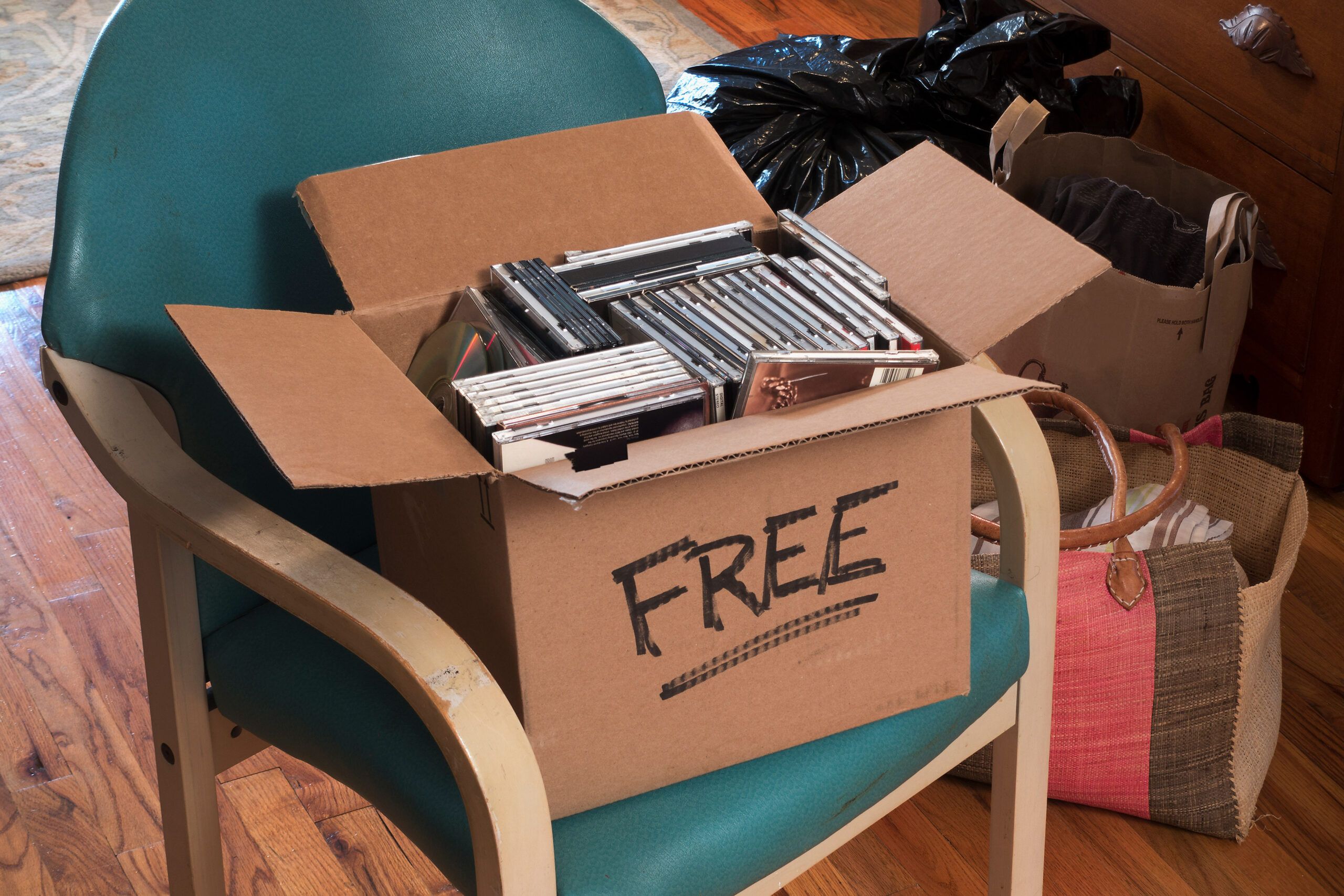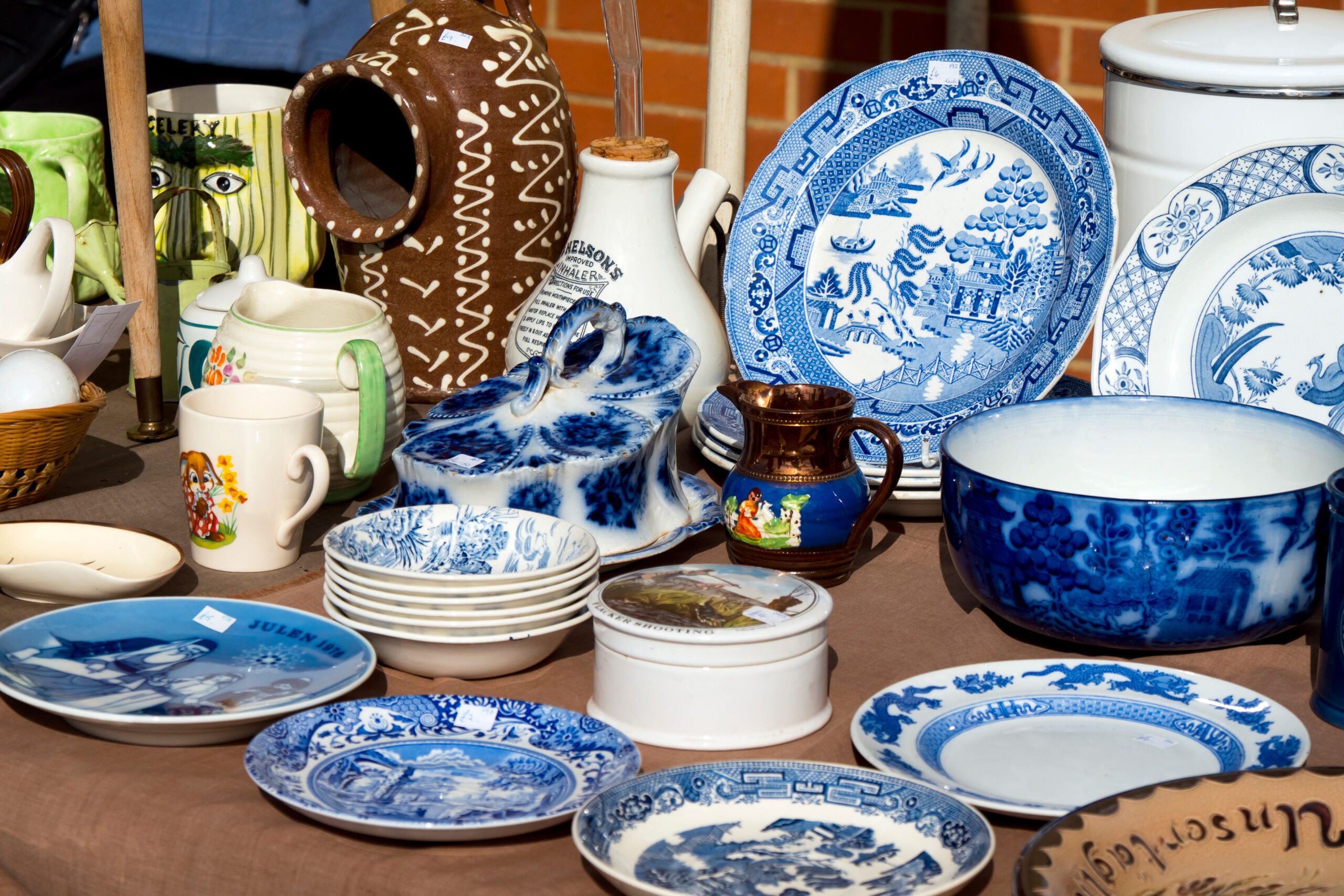Yard sales are a great way to declutter your home and make some extra cash. Simple choices on timing, pricing, and display can mean the difference between a successful sale and a full-on flop. To help you navigate the process, here are the dos and don’ts of selling your unwanted wares the old-fashioned way. Follow these 14 tried-and-true tips to take your yard sale to the next level
1. Title Your Yard Sale Wisely
The name you choose for your sale can impact attendance. “Estate Sale” or “Moving Sale” implies a larger selection of items and often attracts more serious buyers. These titles suggest you’re liquidating a house’s contents, which can lead to higher profits compared to a standard “Garage Sale” or “Yard Sale.”
2. Drum Up Attention for Your Sale
Local advertising can make your yard sale thrive. Place ads in newspapers, online platforms like Facebook Marketplace or Craigslist, and community bulletin boards. Spread the word through social media and local groups.
For day-of-sale signage, focus on clarity and visibility. Use large, brightly colored posterboard with bold, thick black letters that are readable from a distance. Include the essentials: the sale’s date and time and directional arrows to its location.
3. Offer Freebies
While giving away items for free might seem counterintuitive, strategic freebies can encourage more spending. Implement buy-one-get-one deals, or offer a free item with a minimum purchase. For example, give away a free book with a $10 purchase or a toy with a $15 spend. Free items can also clear out older stock, making room for higher-value items.

4. Start Your Sale on Friday
While many people assume weekends are the best time for yard sales, try starting on a Friday. Early birds are often serious buyers looking for the best deals. Hosting your sale over multiple days can attract a wider range of customers who may not be available on weekends.
5. Time Your Yard Sale Right
Timing is everything when it comes to yard sales. Most of your business will happen in the morning, so aim for an early start, like 9 a.m., and finish up in the late afternoon. This schedule helps you catch early risers and those who prefer to shop later in the day. Keep an eye on the weather forecast, and avoid having a yard sale on days of extreme heat or potential rain. A well-timed sale can lead to higher foot traffic and increased sales.
6. Include Workshop Leftovers in Your Sale
You might be surprised by what sells at a yard sale. Building supplies and materials, including leftover lumber, old tools, gutter segments, and remnants of stone or marble, are often in high demand. Arrange similar items together for easy browsing. If they’re heavy, prop them against a wall for better visibility and easier handling. These items can appeal to do-it-yourself (DIY) enthusiasts or homeowners looking for affordable materials for their projects. Even slightly used or older tools can find new life in someone else’s workshop.
7. Get the Go-Ahead From Officials for Your Yard Sale
Before hosting your sale, check with your local municipality regarding any rules or regulations. Some towns require permits for yard sales or limit the number of sales you can have per year. Familiarize yourself with federal rules on reselling certain items, especially baby furniture, which may be subject to recalls and safety concerns. Ensuring you meet all legal requirements can prevent any last-minute disruptions or fines.
8. Display Merchandise on Sale With Care
Avoid placing items directly on the ground unless they’re large pieces of furniture. Instead, use tables to display smaller items. Hang clothing on clothes racks. Cover tables with sheets or tablecloths to create a neater, more organized appearance that will attract buyers. Grouping similar items together and using attractive displays can entice shoppers to explore and increase their likelihood of making purchases.

9. Price Goods Based on Condition
Pricing can make or break your sale. Follow the 50-30-10 rule: Sell almost-new items at 50% of retail price, slightly used items at 25%–30% of retail, and well-used items at 10% of retail. Yard sale shoppers are looking for bargains, so price accordingly. Even if you believe an item is worth more, think about what you would find to be a good deal if you were the buyer. Also, be prepared for some customers who may want to haggle—being flexible with prices can help you sell more.
10. Tag Everything That’s for Sale
To avoid constant haggling and save time during the sale, clearly price all items. Affix price tags in an easy-to-find spot on each item, or group similar items together with a single price sign. This approach allows customers to browse independently and makes the checkout process smoother. It’s also helpful to have a price guide or cheat sheet for larger or bulkier items that may not have visible tags.
11. Be Prepared for Early Birds
Some enthusiastic shoppers may arrive before your official start time. Decide in advance how you’ll handle early birds. You can either welcome them or politely ask them to return at the scheduled opening time. Whatever you choose, be consistent to avoid any conflicts. Early-bird shoppers are often eager to find the best items, so having a strategy in place can help manage the early rush smoothly.
12. Have Plenty of Cash On Hand for the Sale
Make sure you have enough small bills and coins to use as change. A good rule of thumb is to have at least $50 in various denominations, including $1 bills, $5 bills, and coins. You may also want to have a secure cash box or apron with pockets to keep your money organized and safe.
13. Stay Hydrated and Comfortable
Hosting a yard sale can be a long and tiring process. Drink plenty of water and take breaks as needed to stay refreshed. Wear comfortable clothing and have some snacks on hand to keep your energy levels up. Having a comfortable chair nearby can give you a place to rest during slower periods.
14. Create a Welcoming Atmosphere in Your Yard
Make your yard sale inviting by playing soft background music and offering refreshments like lemonade or bottled water. A pleasant environment can encourage customers to stay longer and make more purchases.

